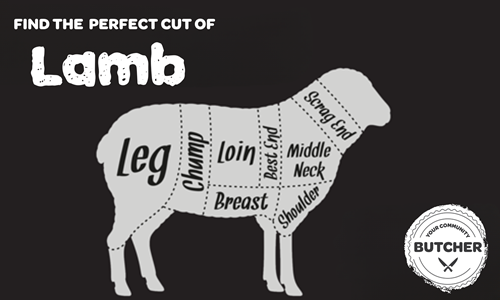
This part of the animal works hard, so the meat from a lamb’s shoulder is full of flavour. It takes a while to become tender, but this means it’s a great choice for stewing and slow-roasting.
To maximise the flavour, cook lamb shoulder on the bone so the meat simply falls apart when pulled with a fork.
Lamb chops or cutlets are the most expensive cuts of lamb but are incredibly delicious and tender.
Best cooked individually normally over a grill or a barbeque.
These are mini T-bone steaks cut from the waist of the lamb. On one side of the chop is the lamb loin and on the other side is the fillet.
Best cooked individually normally over a grill or a barbeque.
The rump comes from the back of the lamb. This cut is lean, tender and full of flavour – just be careful not to overcook as it will become tough if left to dry out.
It is delicious pan-fried whole, finished in the oven for a few minutes, then sliced to reveal its blushing pink centre. Or, it can be cut into chops on the bone then grilled or pan-fried.
Like the shoulders, the legs of a lamb work hard, which means that this cut has a good, strong flavour.
Leg of lamb is great roasted whole on the bone or boned and barbecued. It’s a fairly lean muscle, so take care not to overcook it, or else it could end up quite dry.
Lamb shank is a super-simple, cheaper cut that goes a long way.
Taken from the lower part of the back legs, there is a lot of collagen in the shank, which, when cooked slowly, gives the meat a lovely soft, melting texture, making this another cut that’s perfect for stews and slow-cooking.
NECK
Neck is a cheap cut and is available at supermarkets and butchers.
How to cook neck
Lamb neck can be cooked slowly on a low heat, yet unlike the shoulder, it can also be treated like a steak and cooked quickly over a high heat until pink.